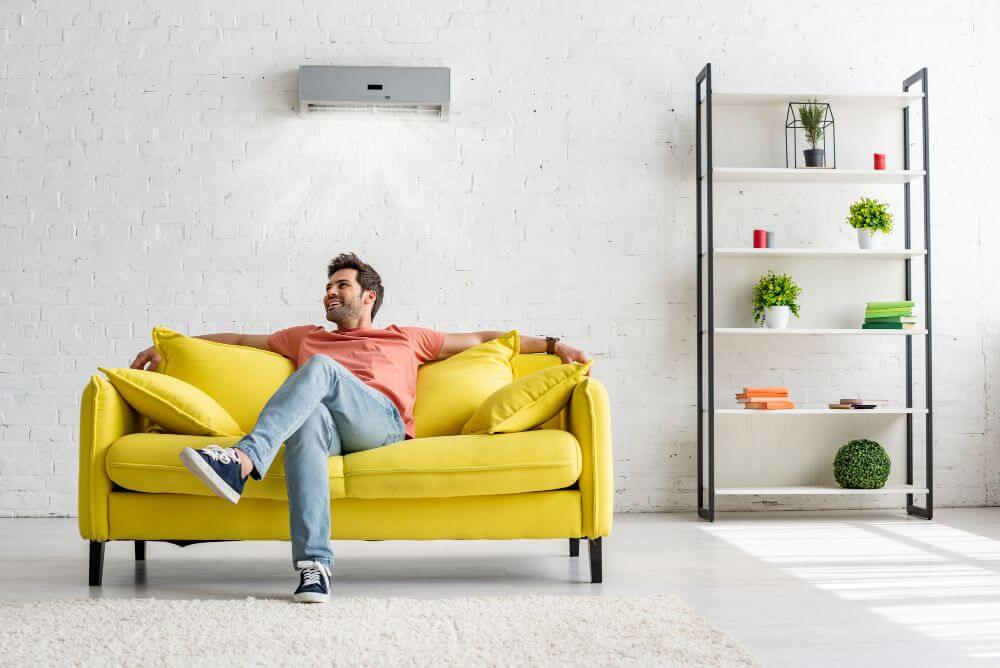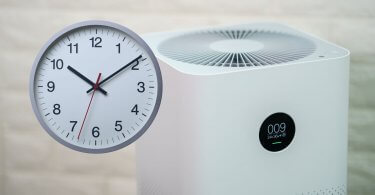I live in San Francisco, one of the most polluted cities in the US. Air purifiers are a staple here; without them, you are just putting yourself at risk of asthma, bronchitis, and a whole host of other lung problems.
I recently purchased an air purifier myself. Like every gadget I purchase, I spent a lot of time understanding the technical specifications to ensure that I get the best deal.
One of my friends recently asked me questions on making his purchase, such as: “What is CADR rating?” and “What is ACH?”. I realized that there is very little information on these topics on the web, so I share some information based on what I learned.
So, What is CADR rating?
CADR stands for “Clean Air Delivery Rate.” It gives you the volume of air purified from particles of a certain size by an air purifier per minute in mathematical terms.
In the ’80s, the measurement of the efficacy of an air purifier had no clear metric. People talked about how good a certain filter is or how fast the airflow from the purifier is. But the end consumer had no clear answer on how to combine these two things, and marketing the device was becoming difficult in the absence of a clear measure.
The Association of Home Appliances Manufacturers (AHAM) developed a metric that would bring the air purifier makers on the same plane as the end consumer and combine the two important things a consumer wanted to know. This metric was the CADR.
How Do You Calculate CADR?
As I said, CADR gives you the volume of air purified from particles. To remind you a bit of high school math, the volume of a room is given by multiplying its length, width, and height in feet. You measure it in cubic feet.

What Is the Size of Particles Measured?
The CADR rating is measured for three types of particles:
- Smoke particles, whose size varies between 0.9-1.0 microns
- Dust particles, whose size can be anywhere between 0.5-3 microns
- Pollen particles can have a size between 5 and 11 microns and are visible to the naked eye.
How Can I Calculate the CADR of My Machine?
Even though you would ideally want to find out the CADR of your machine, sadly, you cannot. CADR is not a calculated metric; it is a reported one based on a standardized test.
The air purifier is put in a 1,008 ft. room (a room the size of 12 x 12 x 7 ft.). The room will have a known amount of each of the three pollutants mentioned above. Then it is run at its maximum capacity, and after about 20 minutes, they stop the purifier. The amount of these three pollutants is measured again.
The difference between the level of pollution earlier versus later is used to calculate the three types of CADR. The extent to which the air purifier removes the three pollutants is added into a single rating known as the total CADR rating.
Is There a Limitation to the CADR Rating?
The CADR rating was created by AHAM, keeping residential air purifiers in mind. The tests are not good for capturing the efficacy of industrial air purifiers. Thus, the CADR rating is limited to a maximum smoke and pollen rating of 450 CFM (cubic feet per minute) and dust rating of 400 CFM (cubic feet per minute).
Is Higher CADR Better?
The definition above would have given you a clue to the answer to this question. The higher the CADR rating, the more pollutants are being removed from the room per minute. Therefore, the better is the air purifier.
Not all brands and products carry CADR ratings. Still, in general, if there is a rating made available by the manufacturer, it is a good sign that the device is quite capable of removing pollutants.
What Is A Good CADR Rating?
CADR is a relative rating; there is no absolute best. As mentioned above, the rating can go up to 450 CFM for pollen and smoke and 400 CFM for dust. Beyond that, the absolute measure does not mean much. You should ideally use it only to compare two air purifiers.
Is CADR the Same As CFM?
CFM is a metric that measures the strength of airflow, or the highest capacity of the fan of the air purifier (or any device that has a fan, for that matter, including table fans and portable air conditioners). It stands for cubic feet per minute. You might have noticed that I have been writing CADR with CFM as a unit, so it is natural to ask whether the two are the same thing.
CFM is just a measure of how well the device displaces air in a room and how quickly. However, as a metric for the effectiveness of an air purifier, it has no standing.
When you combine how much pollutants the air purifier removes with the airflow that it generates, CFM gives you CADR. Therefore, a device that has a 100 CFM fan, but is only able to remove 66% of pollutants from the room, will have a CADR of 66 (66% * 100 CFM).
Since many manufacturers do not specify CADR, AHAM had a “2/3 rule”, which states that the CADR of a device is 2/3rd of the CFM in most cases. Hence a device with an airflow of 300 CFM will have a CADR of 200 CFM.

What Is ACH?
Apart from CADR, you might also have heard of the term ACH. Air Change per Hour (ACH) is the number of times in an hour that the device can replace the air in a room. The fresher the air, the lower is the level of pollutants.
How To Calculate Air Changes Per Hour?
The CADR for a given room size gives you the ACH of an air purifier.
For example, let’s say that your cleaner has a CADR rating of 200 CFM, and your room size is 300 sq. ft.
In one hour, the cleaner can remove 200 * 60 cubic feet of pollutants = 12,000 f3h.
If your room is about eight feet tall, that comes out to 12,000/8 = 1,500 f2h.
For an area of 300 sq. ft, that means the device can change the air in 1,500/300 = 5 hours.





Leave a Comment